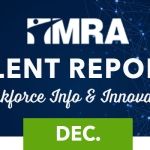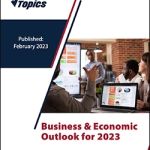It seems we have been in a constant state of change since March 2020. In any year, organizations budget in anticipation of change, but the annual process has become more difficult with a tight labor market and unpredictable economy. End-of-year predictions become valuable tools for employers trying to find innovative ways to overcome these challenges.
Here is a summary of what economists and business analysts identify as “watch list” items for 2023.
Labor
This has been a topic of conversation since President Biden began campaigning and vowed to be the most pro-union president in history. Jennifer Abruzzo was appointed the National Labor Relations Board (NLRB) General Counsel and promptly stated her intent to examine several employment issues, including representation during investigation proceedings, employment status, mutual aid, and the employer’s duty to recognize and bargain.
The efforts of this administration have traction. According to the NLRB, fiscal year 2022 (October 1, 2021 to September 20, 2022) brought 53 percent more union petitions than the prior year and the highest number since fiscal year 2016. Unfair labor practice charges also increased—up 19 percent—to show the largest single-year increase since fiscal year 1976 (the Carter administration) and the largest percentage increase since fiscal year 1959 (the Eisenhower administration).
Key takeaway
Labor organizing activity has grown across more industries, such as service, health care, and hospitality, and is no longer exclusive to manufacturing. Bargaining topics still focus on traditional issues—pay, benefits, and working conditions such as paid time off and long hours. Staying competitive with benefits and pay can help, but employers also need to understand what employees find value in. Open, honest, direct, and respectful communication is key to union avoidance or successful contract negotiations.
Fair Labor Standards Act (FLSA)
President Biden has also promised a review of exempt status qualifications and pay. In June, the Department of Labor (DOL) announced its intent to issue proposals to increase the minimum wage for exempt employees and review the duties associated with “white collar” exemptions. There has also been talk of reviewing the number of hours worked before becoming eligible for overtime pay.
The definition of independent contractor is also being reviewed. On October 13, 2022, the DOL released a Notice of Proposed Rulemaking suggesting a broader definition be applied. The current rule stresses two key factors in determining a joint-employer relationship: A worker’s control over his or her work and the opportunity for profit or loss. The proposed rule broadens the definition of employee to include anyone who is economically dependent upon the employer and includes a six-factor test to determine economic dependence. A comment period is in place that will expire on December 13, 2022.
Key takeaway
Employers may want to review the salaries of exempt employees and note which are near the pay threshold. If job descriptions have not been reviewed recently, consider a review to align them with the current work performed. Employers should review those currently classified as independent contractors in preparation for impending changes.
Technology
Many organizations agree that they were on a track to increase technological capabilities prior to 2020, but the pandemic accelerated the process. Companies have had to find ways to make it possible to communicate with anyone from anywhere at any time. The U.S. Chamber of Commerce suggests that voice search technology (think of Siri and Alexa as your personal assistants) will become the new trend, which may make that easier, but also raises security concerns.
Artificial intelligence (AI) has also become a widely used recruiting tool. While it can expedite the screening process, algorithms created from information gathered over time may deliver unintended results. The Equal Employment Opportunity Commission (EEOC) published guidance in May 2022 to help employers utilizing AI systems avoid disparate impact and the National Artificial Intelligence Initiative (NAII) was established to help ensure the creation of trustworthy systems. States have also become more proactive, with 17 introducing AI bills or legislation, nine forming task forces to address AI-related issues, and four enacting laws.
Key takeaway
With an increase in technology also comes an increase in risk. Not only can technology create issues with confidentiality and compliance, but it can also bring financial risk associated with cyber-attacks. State legislation surrounding AI is rapidly changing and organizations should understand that cybersecurity is an essential part of any strategic business plan.
Sustainability
Typically associated with products and goods, this can also relate to employee resources. One topic that has become more prominent since the Great Resignation is developing career paths for emerging talent. By encouraging the growth of internal talent, companies combat boredom and feelings of not being challenged at work (refer to Developing Career Paths in this issue), while retaining talent. Leaders are able to pass on responsibilities while mentoring high-potential employees.
Key takeaway
Forbes reported in June 2022, that around 70 percent of high-level executives are seriously considering quitting their jobs, primarily due to high levels of stress related to pandemic burnout and current inflation concerns. Identifying and developing emerging leaders in your organization can help protect your company against a sudden loss of key talent.
The Economy
There has been much speculation about how world events will impact the economy. Company leaders have been hesitant to react and feel that 2023 will bring change. The unemployment rate is slowly trending down and companies are holding off on reducing their workforce out of fear they will not be able to fill open positions in the future. The leisure and hospitality industry continues to hire and increase employee numbers, although it has not returned to pre-pandemic levels. This industry is the most reactive to economic changes and is usually the most impacted by a change in consumer spending habits.
Key takeaway
Although some large employers have conducted layoffs, most are waiting to see what the new year will bring. Some industries, such as banking, have seen an increase in mergers and acquisitions. Dr. Chris Kuehl, who spoke at MRA’s Economic Update, suggests that companies watch consumers closely and be ready to react to any shifts in spending habits.
MRA will continue to provide resources on these, and other topics, as trends develop. For more information, contact the 24/7 HR Hotline at 866-HR-Hotline (866.474.6854) or [email protected].





